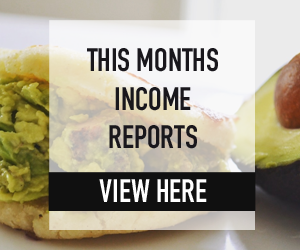The Muisca of people of Colombia
Also known as Chibchas, the Muiscas were an indigenous group who lived in present-day Colombia, South America. They were skilled farmers, weavers, and goldsmiths, and their culture was rich in arts, music, and mythology. The Muisca people were known for their sophisticated system of government and their complex religious practices.
What is the Muisca Gold Raft?
One of the most iconic symbols of the Muisca people is the Muisca Gold Raft, also known as the “The Chibcha Gold Raft.” This was a religious ceremony that involved the offering of gold to the gods. The ceremony was held in Lake Guatavita, and it involved the immersion of the gold in the lake. The ceremony was believed to bring good fortune and prosperity to the Muisca people. The Spanish colonizers were fascinated by the Muisca Gold Raft and sought to plunder the gold offerings made during the ceremony.
Want to learn more about the Muisca people and their goldsmithing traditions? Check out the Gold Museum in Bogotá.
The Gold Museum in Bogotá is a fascinating destination that showcases the rich history and cultural heritage of the Muisca people. The museum houses a collection of gold pieces that were created by the Muisca people, as well as other indigenous groups in Colombia. Visitors to the museum can learn about the advanced goldsmithing techniques used by the Muisca people and the cultural significance of the gold pieces. The Gold Museum is a must-see destination for anyone interested in the history and culture of the Muisca people and the broader region of South America.
What was the lifestyle of the Muisca people?
The Muisca people lived in small, independent villages, each with its own leader. They were skilled farmers, and their diet consisted mainly of corn, potatoes, beans, and other crops that they grew on their terraced fields. They also hunted and fished for food. The Muisca people were skilled weavers and created intricate textiles using natural dyes. They were also skilled goldsmiths, and their goldsmithing techniques were highly advanced for their time.
What was the government and social structure of the Muisca people?
The Muisca people had a complex system of government that was organized around a central ruler, known as the Zipa. The Zipa was advised by a council of nobles and was responsible for making decisions that affected the entire society. The Muisca people had a class-based social structure, with the nobles enjoying higher status and more privileges than the common people. The Muisca people also had a system of trade that involved the exchange of goods and services between different villages.
What were the religious beliefs of the Muisca people?
The Muisca people had a complex pantheon of gods and goddesses, and their religious practices revolved around the worship of these deities. They believed in reincarnation and held that the souls of the deceased could be reincarnated into various forms, including animals and plants. The Muisca people also believed in the power of magic and used various rituals and ceremonies to appease their gods and bring good fortune.
What was the impact of the Muisca people on Colombian culture?
The Muisca people had a significant impact on Colombian culture and left a lasting legacy that can still be seen today. Their sophisticated system of government and their intricate religious practices influenced the development of the Colombian state. The Muisca people’s skilled craftsmanship in goldsmithing and weaving also contributed to the country’s rich artistic heritage.
What was the economy of the Muisca people like?
The Muisca people had a complex economy that revolved around agriculture, trade, and craftsmanship. They were skilled farmers and grew a variety of crops, including corn, potatoes, beans, and other vegetables. They also hunted and fished for food. The Muisca people were known for their advanced goldsmithing techniques, and they created intricate gold pieces that were highly prized by other indigenous groups and European colonizers. The Muisca people also engaged in trade with other villages, exchanging goods and services.
What was the relationship between the Muisca and the Spanish colonizers?
The Muisca people had a complex relationship with the Spanish colonizers who arrived in the region in the 16th century. Initially, the Muisca people were able to maintain their independence and resist Spanish domination. However, over time, the Spanish colonizers were able to gain a foothold in the region and exert increasing control over the Muisca people. The Muisca people were forced to pay tribute to the Spanish colonizers and lost much of their autonomy. The Spanish colonizers also introduced diseases that decimated the Muisca population and disrupted their way of life.
What is the legacy of the Muisca today?
The Muisca people have left a lasting legacy in modern-day Colombia. Many aspects of their culture, such as their religious practices, artistic traditions, and system of government, have influenced the development of the Colombian state. The Muisca people are also remembered for their skilled craftsmanship in goldsmithing and weaving, which have contributed to the country’s rich artistic heritage. Today, there are many organizations and initiatives that are dedicated to preserving the culture and traditions of the Muisca people and promoting greater understanding of their history and legacy.
Other ways people asked this question:
- What was the economy of the Muisca civilization?
- How did the Muisca people interact with the Spanish colonizers?
- What is the cultural legacy of the Muisca people in modern-day Colombia?
- What was the culture of the Muisca people in Colombia?
- How did the Muisca people govern themselves?
- What were the religious beliefs of the Muisca people of South America?
- What was the impact of the Muisca civilization on modern-day Colombia?
























January 9, 2023
[…] focused on a different cultural group. You’ll have the chance to see gold pieces from the Muisca, Quimbaya, Calima, and Sinú cultures, among […]